Wiener Schnitzel is a crispy breaded veal cutlet. Learn with this simple recipe how to make an authentic Wiener Schnitzel that is perfectly crispy and tender.
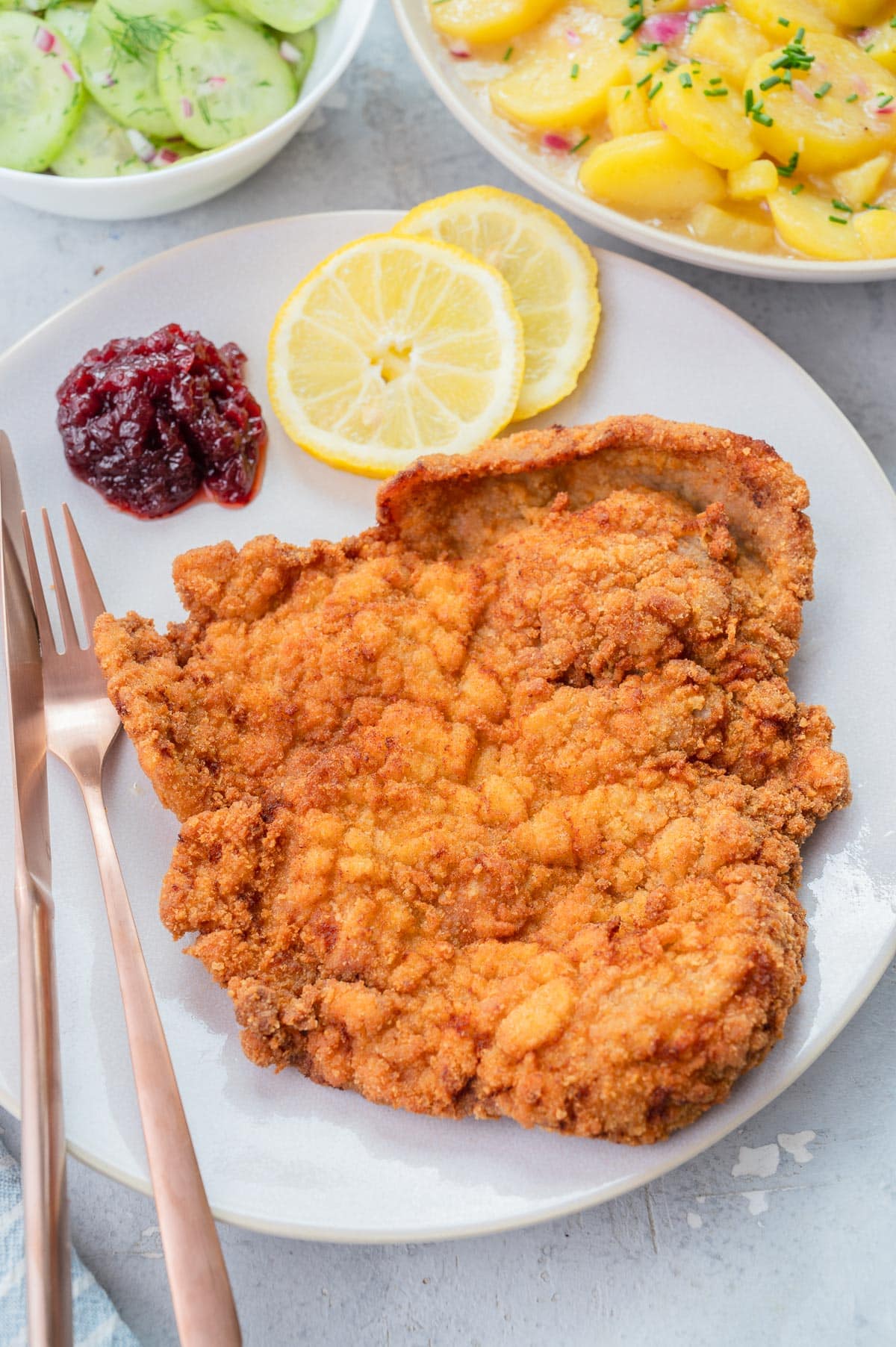
What is Wiener Schnitzel?
Wiener Schnitzel is one of the most iconic Austrian dishes. It’s very popular in Austria and neighboring countries. Wiener means Viennese (from Vienna) in German so the name has nothing to do with hot dogs or wieners.
Wiener Schnitzel is a breaded veal cutlet that is pounded very thinly and then deep-fried until extremely crispy. It’s usually served with lemon slices/wedges, lingonberry jam, and potato salad.
What’s the Difference Between Schnitzel and Wiener Schnitzel?
Schnitzel can be made from pork/chicken/turkey and is usually pan-fried. Wiener Schnitzel is a dish with a protected origin and must be made from veal and deep-fried. German Schnitzel is usually made from pork (Schweineschnitzel). German Jägerschnitzel is a breaded or unbreaded pork Schnitzel served with mushroom sauce.
Schnitzel made from pork is called “Wiener Schnitzel vom Schwein” (Schnitzel from pork) or “Schnitzel Wiener Art” (Viennese-style Schnitzel). The name Wiener Schnitzel is protected by Austrian law!
If you’d like to read more about Schnitzel, here is an article about what is Schnitzel and about the different kinds of Schnitzel.
Ingredients
Here’s what you need to make this delicious dish:
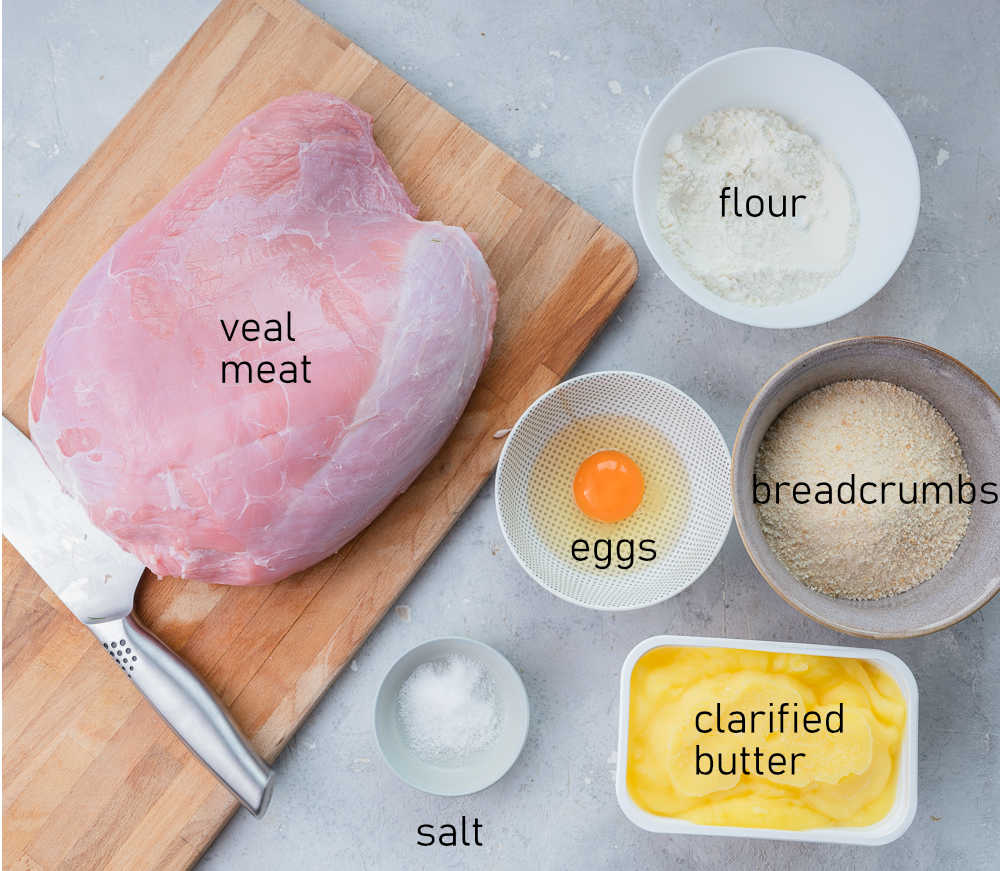
1) Meat
What kind of meat do you need for Wiener Schnitzel?
An authentic Wiener Schnitzel must be made from veal meat. I mean, you can make a Schnitzel from pork, chicken, or turkey but it just won’t be Wiener Schnitzel. Pork meat is a very popular alternative to veal meat which is expensive and more difficult to buy.
Cut of pork for Schnitzel – chose pork tenderloin or pork neck meat.
You can also make Schnitzel from chicken or turkey, but I would recommend you use this recipe for breaded chicken cutlets – I make the breading with parmesan cheese with a hint of lemon and parsley, it’s really good.
Cut of veal for Wiener Schnitzel
Top Round Cut (a muscle on the inside of the rear leg) called Kalbsoberschale in German is considered the meat of choice for Wiener Schnitzel. I believe this cut of meat is called Veal Topside Schnitzel in the UK/AU. Another good cut is Eye of Round (Kalbsnuss or Kalbskugel in German, it’s shown on the photo) – this is a single oval muscle from the front portion of the rear leg. Both these cuts are very lean pieces of meat, they have almost no fat. They are tough pieces of meat that require long and slow braising or they need to be cut against the grain into thin cutlets.
Make sure to source a Humanely Raised Veal.
2) Breading
For the breading you will need:
- flour – helps the coating stick to the meat
- eggs – when I forget to buy the eggs I’m using mayo whisked with egg whites that I usually have in the freezer (leftover from other recipes), the combo of mayo (which is made from egg yolks and oil) and egg whites works really well
- breadcrumbs – make sure to use fine breadcrumbs and not Panko breadcrumbs
3) Cooking fat
Clarified butter (called Butterschmalz in German) is absolutely the best cooking fat for Wiener Schnitzel. The richness and flavor are just unbeatable. You can buy it or make homemade clarified butter (make sure to strain it really well if using it for this recipe). You can’t use regular butter – it would burn very quickly.
You can also use any high smoke point vegetable oil such as canola oil, sunflower oil, or peanut oil. You can also use lard.
How to make Wiener Schnitzel step by step
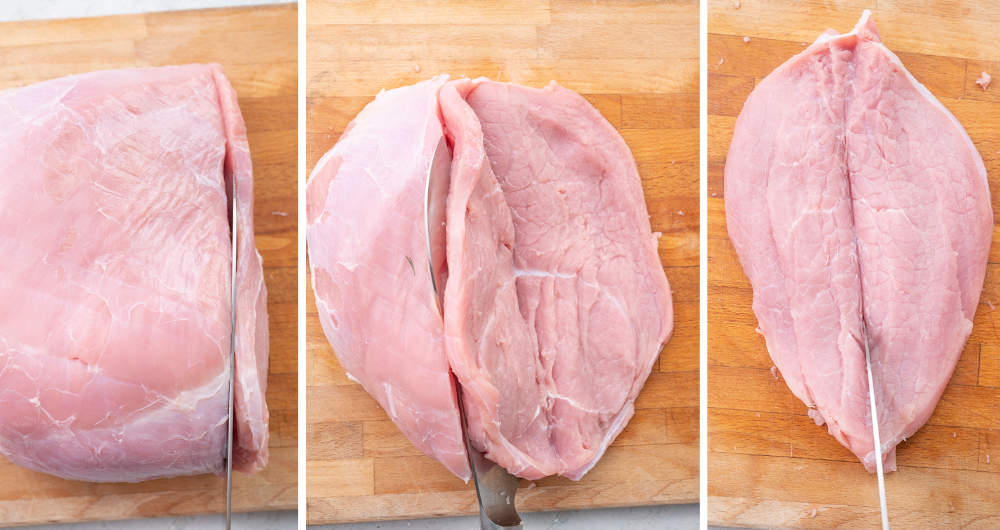
STEP 1: Cutting the cutlets from a whole piece of veal meat.
This step is optional as you can just purchase veal cutlets from your butcher but if you’d like to know how to cut cutlets from a whole piece of veal meat, here’s how:
- Wiener Schnitzel is usually very large and covers a whole plate. You may think it would be difficult to eat such a big cutlet but the meat is flattened so thinly so it really is not such a problem.
- To get such a large cutlet you need to make a “butterfly cut” – this means you need to make one cut against the grain but not all the way through then make a second cut all the way through. Open up the cutlet like a book and make a shallow cut in the middle to help it open (do not cut all the way through). Now you have a large cutlet that is ready to be flattened.
- Do not attempt this if you don’t have a very sharp knife!
- What does it mean to cut the meat against the grain: you need to make the cut perpendicularly to the fibers of the meat. You can see in the photo above that the fibers of the meat run from the left to the right so you need to make the cut from the top to the bottom. This way you’re cutting through the meat fibers and your cutlet will be tender and not tough and chewy.
- If you’d like to see this on a video, this is a great video from a Viennese restaurant Meissl & Schadn which is known for their Wiener Schnitzel. The video is in German but has English subtitles and it shows really well how an authentic Wiener Schnitzel is made. You can also hear an Austrian dialect which is so different from German! I was actually in this restaurant and can attest that their Schnitzel and potato salad are very good. The Apple Strudel was unfortunately not that good.
- A note about the size of the cutlets: I wanted to explain how Wiener Schnitzel is traditionally made but to be honest it’s not really practical for the home cook. The cutlets prepared this way come out really huge and it’s difficult to cut them, flatten them, bread them and fry them. You would need large trays for the breading station and a really large pan to fry them. You can see on the video how large are the trays and pan in the restaurant kitchen. It’s just not practical in a home kitchen. To make smaller cutlets, you can just cut larger cutlets in half or into four parts and or just cut the meat into slices instead of making butterfly cuts.
- When purchasing veal cutlets from a butcher you will probably get smaller cutlets that are easier to handle.
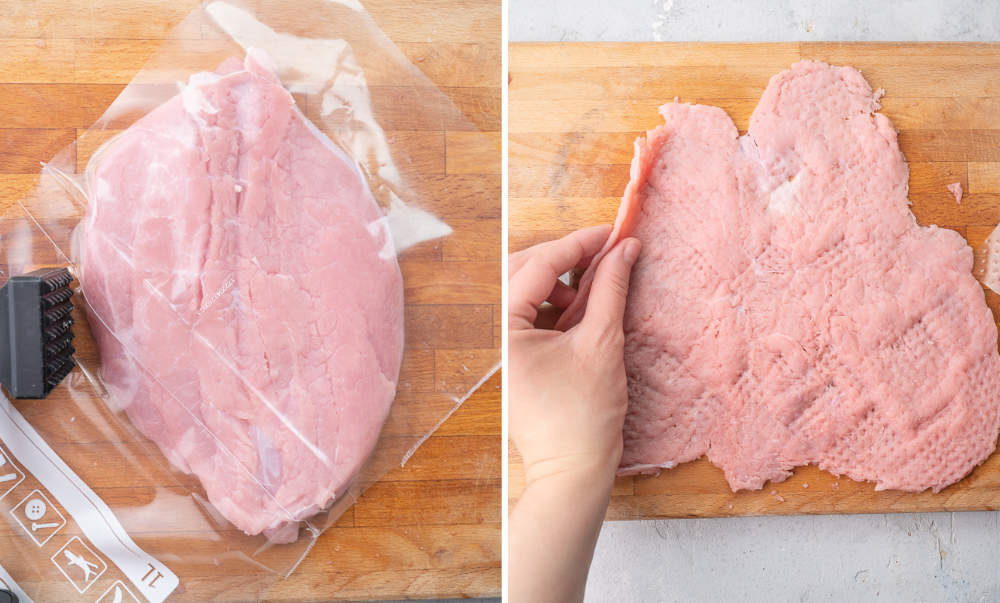
STEP 2: Flattening the cutlets.
No matter if you’re cutting the cutlets yourself or if you’re getting them sliced by your butcher, you will need to flatten them a bit more.
Place a thick plastic bag on top of a cutlet and pound it with a meat mallet starting from the center and moving towards the edges until is uniformly thick – 2/16-3/16 of an inch (3-4mm). It should be really thin.
If using pork, you can make thicker cutlets, about 1/4 inch (6mm) thick. If using chicken or turkey, they can be even thicker.
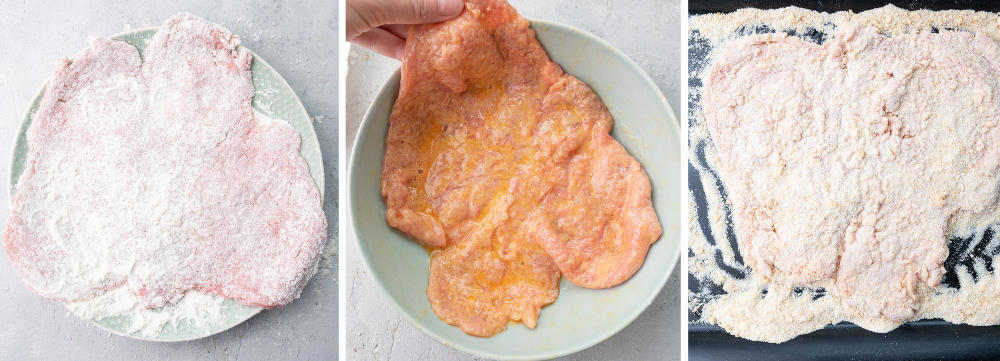
STEP 3: Breading the cutlets
Set up your breading station: prepare three large plates (or trays, depending on the size of your cutlets), one with flour, the second with eggs, and the third with breadcrumbs. Beat the eggs using a fork but don’t do that very thoroughly, you should still see some parts of egg whites and egg yolks.
Season your cutlets on both sides with salt, then dredge in flour, shake off excess flour, dip in egg (allow excess to drip off), then coat in breadcrumbs. Repeat this for all cutlets. Place on a large plate/tray.
Coating the cutlets in breadcrumbs: for an authentic Schnitzel like you would get in a Viennese restaurant, you need to coat the cutlets in breadcrumbs without pressing them into the cutlet. This will result in a coating that is light and puffed – it will detach from the meat in some places. This is an authentic way to do it.
I actually prefer a thicker coating that adheres well to the meat so when I make my Schnitzel at home, I always press the breadcrumbs well. Test for yourself what you prefer more.
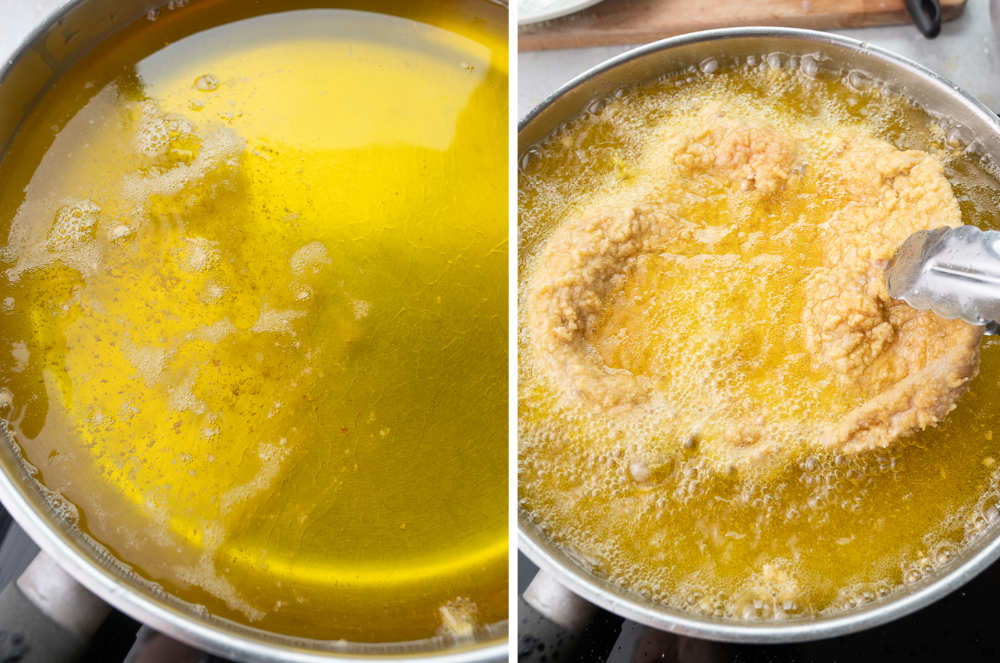
STEP 4: Frying the cutlets
Now it’s time to cook the cutlets. You should have enough fat in your pan so that the Schnitzel can ‘swim’ in oil, which is at least 1-inch (3cm) of fat in the pan.
The fat should be hot enough – you can test its temperature by throwing a small amount of breadcrumbs into the fat. If the fat is foaming vigorously, it’s hot enough.
Place the Schnitzel in the pan, laying it away from your body. While the cutlet is cooking, shake gently with the pan and with the Schnitzel holding it with kitchen tongs. This is a special technique called souffleing – it produces bubbles under the breading and a characteristic waved surface of the Schnitzel. Cook the cutlet on both sides until golden brown in color. The cooking process should not exceed 5 minutes.
Transfer to a plate and repeat with remaining cutlets.
Secrets to the best Wiener Schnitzel – a summary
- pound the meat really thinly
- deep-fry the cutlets instead of pan-frying them – this is the only way to get its hallmark puffed and extremely crispy breading – the cutlets must ‘swim’ in the fat
- deep-fry the cutlets in clarified butter – the flavor is so much better in comparison to oil or lard!
- use veal meat
- use fine breadcrumbs not Panko!
- don’t beat the eggs very thoroughly
- shake with the cutlet and the pan while cooking the Schnitzel – this is a special technique called souffleing
- serve the cutlet with lemon slices that are a traditional side for Wiener Schnitzel – lemon juice squeezed over the Schnitzel complements its flavor perfectly
What to serve with Wiener Schnitzel
The most traditional sides to Wiener Schnitzel are lemon slices/wedges and lingonberry jam (thick cranberry sauce is a good substitute). It’s also commonly served with potato and cucumber salad.
- Austrian/German Potato Salad (shown on the photos)
- Parsley butter potatoes (Petersilienkartoffeln) – a very popular side for Wiener Schnitzel – boiled potatoes coated in melted butter with fresh chopped parsley
- French Fries
- Austrian/German Cucumber Salad (shown on the photos) or creamy Polish cucumber salad
- Austrian/German Braised Red Cabbage
- Green Salad with Vinaigrette
- you can serve leftover cutlets as Wiener Schnitzel sandwich – a schnitzel is stuck between two halves of a Kaiser roll with lettuce, tomatoes, mayo, mustard, and dill pickles
The Schnitzel is usually served alone on a large plate with lemon slices and lingonberry jam, while the sides are served on separate plates.
Storage
Wiener Schnitzel is best freshly prepared, but if you’d like to reheat it, it’s best to do it in an Air Fryer or oven (325°F/160°C). It can be frozen but won’t be as crispy as freshly prepared.
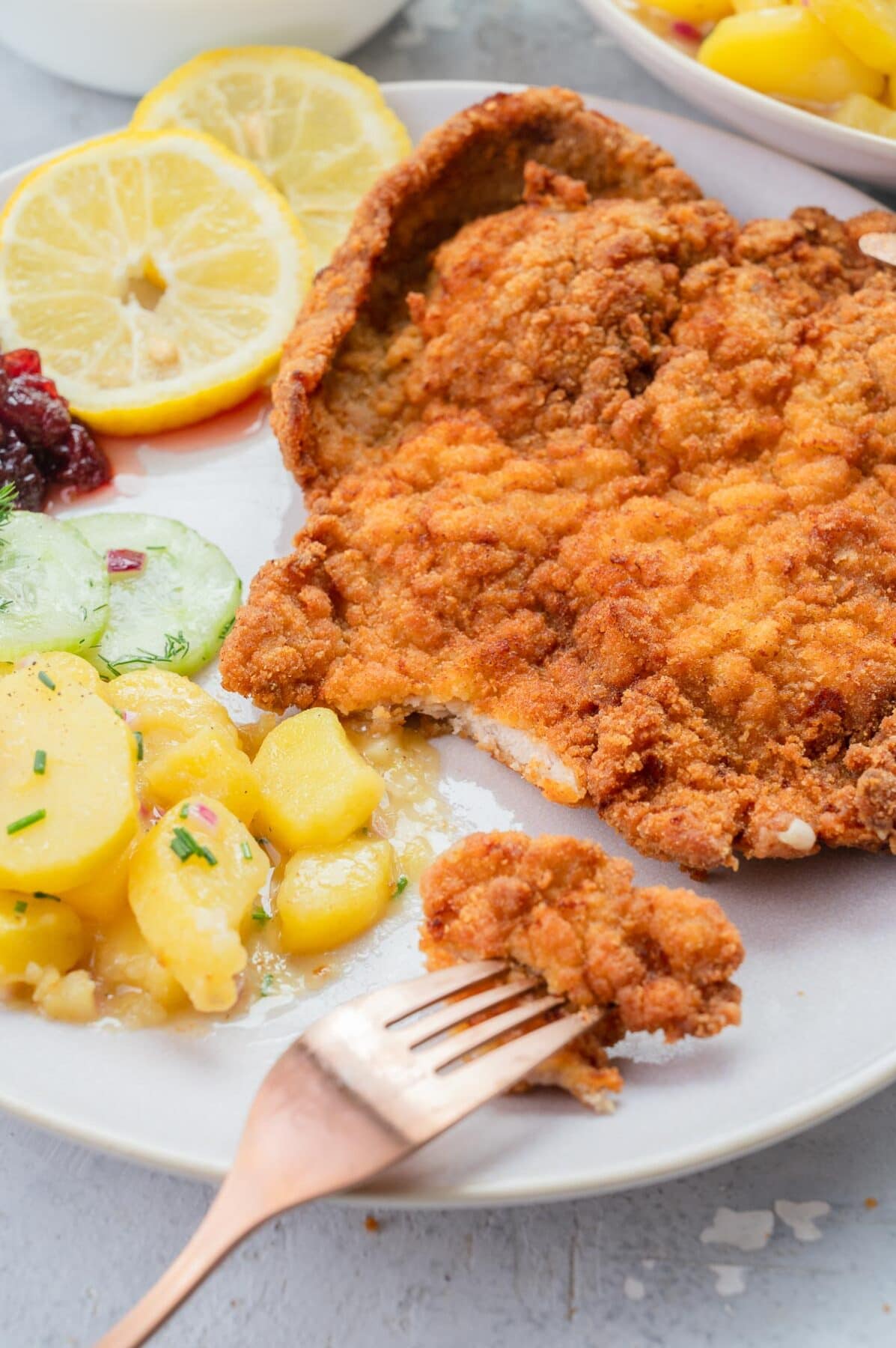
Authentic Wiener Schnitzel Recipe
Ingredients
- 4 small veal cutlets top round cut
- 1/2 cup flour 60g
- 2 eggs
- 1 cup breadcrumbs 130g
- salt
- 3-4 cups clarified butter or vegetable oil
- lemon wedges/slices to serve
- lingonberry jam or thick cranberry sauce to serve, optional
Would you like to save this?
Instructions
- Place your veal cutlets on a large chopping board, place a thick plastic bag on top and pound into very thin cutlets. Start pounding from the center towards the edges of the cutlet. It should be really thin, about 2/16-3/16 of an inch (3-4mm).
- Prepare your dredging station: add flour to a large plate, beat the eggs in a large rimmed plate (don't beat it very thoroughly), then add the breadcrumbs to a third large plate.
- Season your cutlets on both sides with salt, then dredge in flour, shake off excess flour, dip in eggs (allow excess to drip off), then coat in breadcrumbs. Repeat this for all cutlets. Place on a large plate/tray.
- Heat the clarified butter in a large frying pan. You should have at least 1 inch (3 cm) of oil in your pan. The cutlet should be able to ‘swim’ freely in the fat. The clarified butter should be hot enough – you can check the temperature of the oil with a thermomether, it should be about 350°F (180°C) or you can just throw a couple of breadcrumbs into the oil – if they’re foaming vigorously, it means the butter is hot enough.
- Place the Schnitzel in the pan, laying it away from your body. Cook the cutlet on both sides until golden brown in color (about 1-2 minutes per side, it should not take more than 5 minutes). Shake gently with the pan and move with the cutlet using kitchen tongs while you’re frying it – it will give it its hallmark waved surface.
- Transfer the cutlets to a plate lined with kitchen towels to drain excess fat. Repeat with remaining cutlets.
- Serve with lemon wedges/slices and lingonberry jam. Drizzle some lemon juice over the Schnitzel.
- Enjoy!
Notes
- The ingredient amounts are only estimates – they can vary significantly depending on the size of the cutlets.
- I really recommend using clarified butter for frying these cutlets, the flavor is so much better in comparison to vegetable oil. Do not use regular butter.
- Even if you have smaller cutlets, they will be quite large after pounding them. If you have medium/large cutlets, you can divide them in half or into 4 parts – they will be easier to bread and fry at home. In Viennese restaurants, you will usually get a really large Schnitzel (in the size of a plate), but it’s harder to bread and fry such large cutlets at home.
- Coating the cutlets in breadcrumbs: for an authentic Schnitzel, coat the cutlets in breadcrumbs without pressing them into the cutlet. This will result in a coating that is light and puffed – it will detach from the meat in some places. This is an authentic way to do it. I actually prefer a thicker coating that adheres well to the meat so when I make my Schnitzel at home, I always press the breadcrumbs well. Test for yourself what you prefer more.
- Use fine breadcrumbs, not Panko.
- Pork Schnitzel – you can make this recipe using pork tenderloin cutlets or pork neck meat.
If using chicken or turkey I would recommend you use this recipe for breaded chicken cutlets. - If using pork, you can make thicker cutlets, about 1/4 inch (6mm) thick. If using chicken or turkey, they can be even thicker.
- I would recommend purchasing veal cutlets from a butcher but if you’d like to cut your own from a whole top round cut (a piece of meat from the rear leg), here’s how to do it: with a very sharp knife (important) make a “butterfly cut” – this means you need to make one cut against the grain but not all the way through then make a second cut all the way through. Open up the cutlet like a book and make a shallow cut in the middle to help it open (do not cut all the way through). Now you have a large cutlet that is ready to be flattened. You can check the photos in the body of the post for reference. This video can also be helpful.
- Calories = 1 small/medium-sized cutlet (1/4 of the recipe). This is only an estimate!

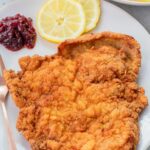
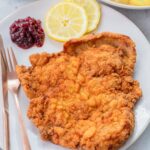
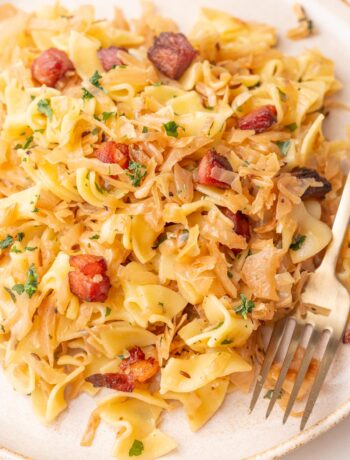
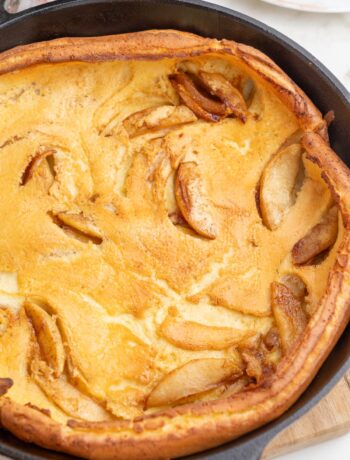
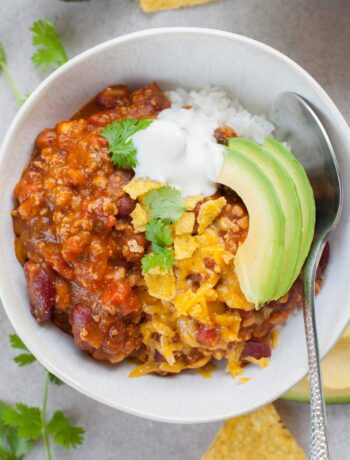
No Comments